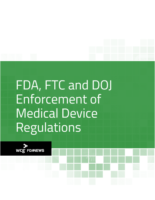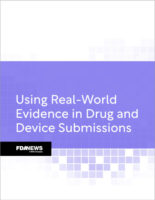
Home » FDA’s Drug Tracking Standards Guidance Is Surprise-Free
FDA’s Drug Tracking Standards Guidance Is Surprise-Free

With drugmakers facing a Jan. 1 deadline to begin complying with new product track-and-trace requirements, the FDA has announced a wide range of options that companies can choose from to satisfy the new law in a short guidance that contains no surprises for industry.
The eight-page draft guidance, released Nov. 26, says drugmakers may use electronic and paper-based means to capture and pass along product tracing and other information. These include paper or electronic invoices, packing slips and electronic data interchange standards.
The guidance also allows for email or web-based systems, as long as they capture and maintain the information in compliance with the law, which includes a requirement to retain the information for at least six years.
Manufacturers have been waiting for the guidance to fulfill requirements under a 2013 law that calls for every drug lot to contain transaction information, history and a statement of ownership as a means to combat counterfeiting.
The guidance is exactly what industry had expected, David DeJean, a vice president of network vendor Systech, said. These processes already are widely used by industry, and many manufacturers have already started to put them into place in anticipation of meeting the 2013 Drug Supply Chain Security Act’s (DSCSA) requirements.
If anything, companies who waited for the guidance to come out before implementing their track-and-trace frameworks are likely to be disappointed by the lack of any depth or real advice, Dirk Rodgers of Dirk Rodgers Consulting said. The guidance provides no detail about how to implement the processes beyond listing the high-level options, he added.
The Healthcare Distribution Management Association said it is still assessing the guidance. At first glance, however, the guidance appears to give the supply chain adequate flexibility in how it can meet the requirements, John Parker, senior vice president of HDMA, said.
The trade group has, however, expressed some reservations with the upcoming deadline, worrying that while most of the supply chain is ready, not every firm will be fully compliant with the requirements by then. In a Nov. 25 letter to the FDA, President and CEO John Gray asked the agency to exercise discretion with its enforcement activities with an eye towards preventing drug shortages.
Under DSCSA, drugmakers, wholesaler and repackagers must meet the standards starting in January, while drug dispensers must meet them starting July 1, 2015. — Bryan Koenig
Originally appeared in Drug Industry Daily, the pharmaceutical industry’s number one source for regulatory news and information. Click here for more information.
Upcoming Events
-
07May
-
14May
-
30May
